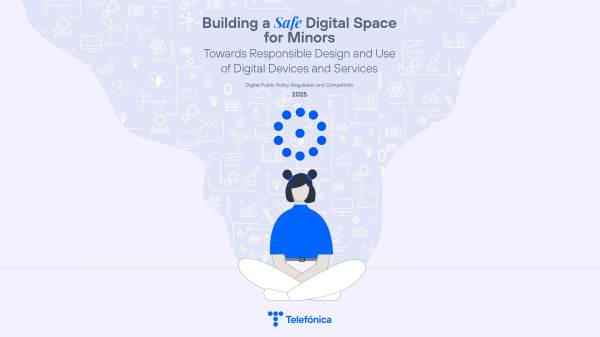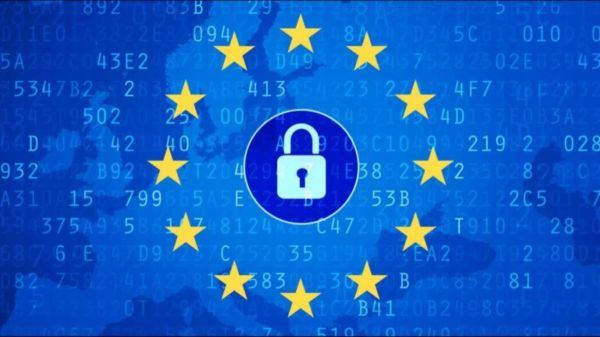In July, we launched the series entitled EC White Paper , where we present Telefónica’s contribution to the public consultation on the White Paper. As a result of this consultation, the Commission will present a legislative proposal, the Digital Networks Act , which will determine the future of the European Union and the telecommunications sector in the next decade through a new regulatory framework.
The first post analysed the proposal for the future of the telco sector, the second post looked at the new challenges facing the new Commission. In this third post we look at the Internet imbalance and the new opportunity to restore it.
The end of the original Internet
The Internet as we knew it at its origins in 1992 no longer exists. The Internet was a distributed, hierarchical network with highly symmetrical traffic flows. Users and service providers connected to local networks, which in turn connected to a higher-level network, and so on up to the top level or Tier-1 networks.
Within the same level, the networks exchanged traffic through peering agreements, whereby, on the basis of a relationship between peers providing the same service to each other, giving each other access to their respective customers and lower level networks, exchanging traffic in a highly symmetrical manner and with similar cost structures, a free settlement of services was established by considering that the cost of the service received was similar to the revenue generated by the service provided to the peer, agreements known as free peering.
The Internet of 1992 has been transformed into a commercial Internet
Internet content and service providers (ISPs), on the one hand, and Internet access service providers and network operators, on the other, had a symbiotic relationship in which both benefited mutually from increased demand; the more services and content available, the greater the demand for Internet access by the telcos, and the more customers the telcos had, the more users accessed the services of the CAPs.
The Internet of 1992 has given way to a commercial Internet. The network of networks is now highly concentrated, with just 5 companies generating more than 70% of Internet traffic; data flow is highly asymmetric, and network architecture is much flatter.
As CAPs grew in size, they moved to connect to higher levels of the network, demanding equal peering treatment and imposing free peering agreements, despite the fact that they were different in nature and did not have peer-to-peer relationships with the network operators.
Over time, the largest CAPs have deployed their own network of submarine cables for their exclusive use, moving back down the Internet hierarchy again, to connect directly to local networks. In this way, they deliver traffic directly to their users without additional intermediary networks, and impose the free settlement model where they do not pay network operators for the service of transporting IP traffic: for the distribution of their traffic through the ISPs’ national distribution and access networks to their end customers.
The relationship between CAPs and network operators is no longer symbiotic, but strictly commercial (and unbalanced)
As the Internet has changed, the relationship between CAPs and ISPs has also changed, becoming a purely commercial and unbalanced B2B relationship.
More than 75% of CAPs’ revenues are related to online services based on the transport of IP traffic. Their business models, either through subscription or free advertising-based models, generate more revenue the more traffic they distribute.
In free models, the more traffic they distribute, the more advertising they deliver; and in subscription models, increasing monthly fees are set according to the quality of video distributed – the higher the quality (SD, HD, 4k), and therefore the more bandwidth and traffic required, the higher the subscription price.
In contrast, telecommunications operators’ revenues, despite the sustained growth of internet traffic at levels of over 25% per annum over the last decade, have remained flat or even declined.
Traffic growth has generated more revenues and higher profits and profitability for CAPs, and more expenses for ISPs in the form of the investment required to increase network capacity to meet growing traffic demand; this increased investment, which is not associated with additional new revenue generation, has reduced ISPs’ profitability.
Specialised companies –Ericsson, Arthur D Little – maintain a forecast of Internet traffic growth in Europe at levels between 15% and 20% per annum. Video will continue to drive Internet traffic growth, growing by 7% in fixed networks and 12% in mobile networks to account for 74% and 72% of total Internet traffic respectively. Continued investment in network capacity growth will continue to be necessary to maintain the quality of the Internet.
By not paying for the distribution of traffic on the ISPs’ networks, the large Internet traffic generators or GGTs develop policies aimed at unlimited traffic growth and thus at maximising their profits: automatic and continuous reproduction of videos, algorithms to maximise users’ attention, massive sending of advertisements, etc. However, in addition to generating this unwanted traffic for their clients, which is estimated at up to 20% of the traffic received by users, they also take unilateral decisions, without the knowledge or participation of their clients, that determine the volume of traffic sent: they decide which codec to use, the configuration of prefetch and adaptive video rate techniques, or the adaptation of video quality to the size of the viewing screen.
With no cost associated with traffic distribution, they make these decisions that determine the volume of traffic to send without efficiency criteria: for example, using outdated codecs or not adapting video quality to screen size. The result can be seen in significant differences – up to 50% – in data consumption for similar services from different providers, and even for the same service from a single provider, depending on the mobile operating system of the handset, Android or iOS.
Network operators need to reach agreements with large Internet traffic generators (TMGs) for the service of transporting IP traffic data over our networks that we provide to them. This commercial negotiation between the parties should be reinforced by the adoption of an arbitration mechanism, in which a competent authority would determine the terms of service provision, in the event that both parties are unable to reach an agreement freely within a reasonable period of time.
An arbitration mechanism would ensure balanced agreements between telecoms and GGTs for the provision of IP data traffic transport services
Pricing the service received would not only improve the profitability of the networks associated with the provision of the service, but would also, by giving a price signal, encourage efficient traffic generation and therefore lower traffic growth.
Both of these factors will undoubtedly contribute to the sustainability of the networks by making them more attractive to investors and by reducing the need for further investment to increase capacity as a result of slower growth in traffic demand.
The development of the DNA entrusted to Commissioner Virkkunen will restore balance to the Internet and ensure the sustainability of investments in very high capacity networks
The work mandated by the President of the European Commission, Mrs. Von der Layen, in the Mission Letter addressed to the Commissioner-designate for Tech, Sovereignty, Security and Democracy, Ms Virkkunen, includes the development of the new Digital Networks Act (DNA) to boost development and investment in secure, high-speed broadband fixed and mobile networks, taking into account the responses to the Commission’s February 2024 public consultation on the White Paper. The DNA therefore represents the most appropriate legislative instrument, in terms of scope, timing and the Commission’s own prioritisation, to restore balance to the Internet and the sustainability of investment in very high-capacity networks.
In the next post we will take a closer look at the new regulatory framework.







